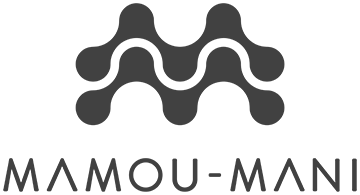YEAR:
2019
LOCATION:
Riyadh
STATUS:
COMPLETED
About the Project
From dust to dust, from sand to sand, from cradle to cradle. The Sandwaves is the largest sand-printed installation to date and is part of an event called the Diryah Season curated by Design Lab Experience. It is made of 58 3d-printed elements that form a continuous ribbon for people to pass through, calm down or meet up. The modules are perforated to show an honest portrait of their structural capabilities.
The perforation and the shape of the Sandwave creates different shades of transparency along the pavilion. As visitors pass through, the sculpture builds narrow alleys and wide plazas, surrounding them in an immersive installation.
The Sandwaves is a manifestation of the kind of innovation that is needed for our time. It uses local materials combined with cutting edge technology to create buildings that are ecological friendly and respond to a native culture and building traditions.
Quotes from Experts
Chris Precht
“Innovation is deeply rooted in the achievements of the past. By studying history, we gain valuable insights and reinvent those ideas to meet future demands. True responsibility begins at a local level, utilizing regional resources to create visionary projects. Sandwaves exemplifies responsible innovation that can positively shape the future of our built environment.”
“This 3D-printed installation, made from sand and furan resin (derived from the cellulose of pine trees and corn kernels), features a lattice design that responds to structural forces. Its visual connection to palm tree patterns results in a cohesive, natural aesthetic.”
Arthur Mampu-Mani
“Our philosophy embraces the harmony between technology, nature, craft, and tradition. From Najdi’s cultural heritage to the surrounding palm trees and dunes, we believe in a holistic design approach. By combining the power of computers and 3D printing, we celebrate both the past and the future. This project is a story woven with many layers—a journey of continuous discovery.”
“The Sandwaves installation is a modular, urban structure, 3D-printed using sand and furan resin. Its parametric lattice adapts to structural forces, creating flowing benches that gracefully curve around palm trees, forming a serene oasis. Working with a team committed to using technology for the betterment of the planet, exploring new techniques, and pushing the boundaries of possibility has been a true pleasure.”
Panel Discussions
Why did you choose to work with sand?
Arthur Mamou-Mani:
We both embrace the cradle-to-cradle approach to design, prioritizing materials that can return to their natural state, leaving no environmental footprint. When we considered the most abundant raw material in the region, sand naturally came to mind.
What are the benefits and challenges of sand-printed architecture?
Arthur Mamou-Mani:
Sand isn’t a particularly strong material, which led us to design very thick structural members—each piece weighed around 160 kg. Our engineers at Format used parametric design to generate the lattice thickness based on the material’s properties.
Typically, sand printing is used to create custom metal moulds for casting. With more time, we could have reinforced certain key elements by casting metal within the lattice, using tensile metal components for the thinner sections.
“Sandwaves is a manifestation of the kind of innovation needed for our time”—could you elaborate on this?
Chris Precht:
Building ecologically means working with local materials. In Bali, that’s bamboo; in Austria, it’s wood; and in the Middle East, it’s sand. The earliest structures were built from sand, and everyone remembers building sandcastles as a child. Sand has deep roots in tradition and memory. With modern technology, however, we can reimagine and use this material in innovative ways.
What inspired the organic and perforated aesthetic of the design?
Chris Precht:
The aesthetics were influenced by patterns found in the surrounding architecture and nature. Elements like bris-soleils, ornaments, and palm trees all share similar visual qualities. We sought to adapt the Sandwaves installation to its environment in a seamless, organic manner.
Is furan resin the material binding the sand?
Arthur Mamou-Mani
Yes, we’re using Furan, a binder made from the cellulose of pine trees and corn kernels. The ExOne printer operates with two buckets of fine sand, with a scooper adding layers of sand while a roller deposits the resin. After printing, the structure must be carefully removed from the loose sand, much like uncovering an archaeological find. The material turns black due to a chemical reaction and requires sandblasting using the same sand.

The Concept
“The Sandwaves modules were 3D printed from sand and resin near the site. Similar to an ink-jet printer, each layer is solidified with a layer of resin and once all layers are printed, the sand is removed manually. We had two types of modules to form continuous arc-based benches adapting to the site and the palm trees. The module’s texture is known as an “octet-truss” and the thickness of each member was defined by the forces going through them. 3D printing allowed us to have different member sizes throughout, which is different from using standard trusses. Modules were placed on a carpentry base which also held the lights and the seating area and each module was kept light enough to be man-handled”
TEAM
Mamou-Mani Ltd.
Arthur Mamou-Mani, Ayham Kabbani, Nina Pestel, Sash Onufriev, Youen Perhirin
Studio Precht
Chris Precht, Fei Tang Precht, Andreas Stadlmayr, Zizhi You
Fab.Pub Ltd.
Giovanni Panico, Holly Hawkins
Design Lab Experience
Mootassem Elbaba, Hibah Elbakree, Nausheen Baig
Format Engineering
James Solly, Sara Andreussi
Special Thanks
PSU university students, Afan Sufak Manziel, SMI, Rely






